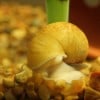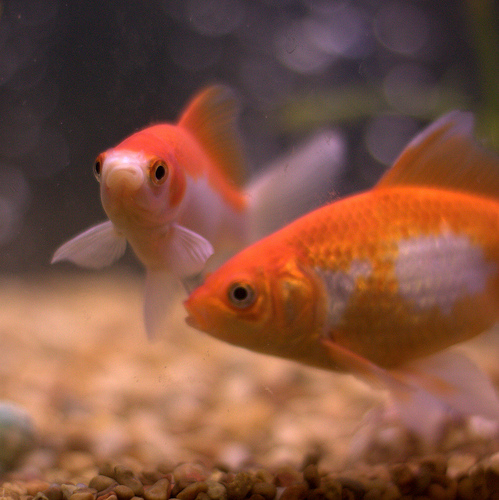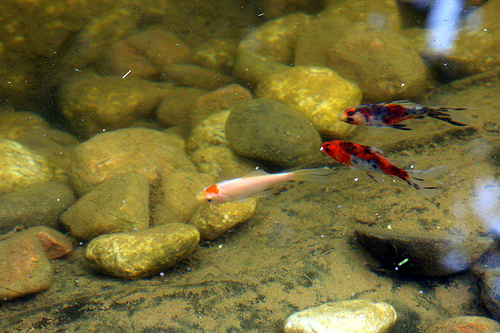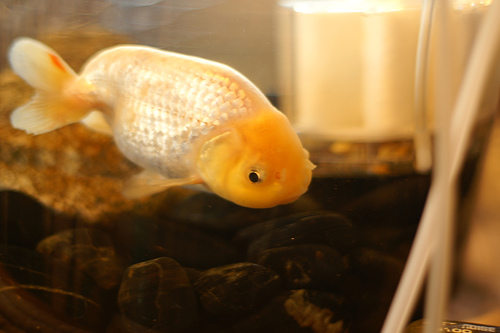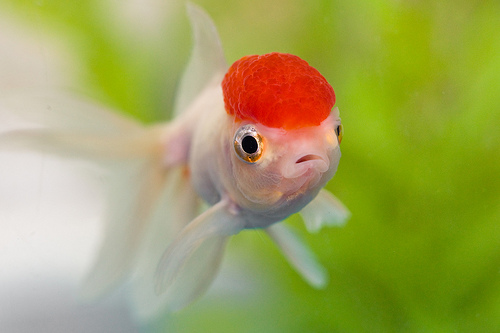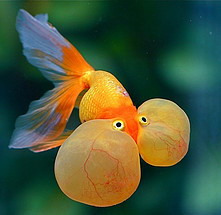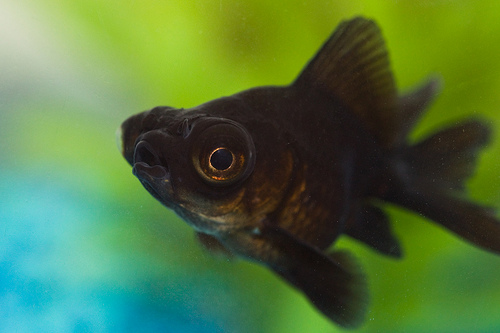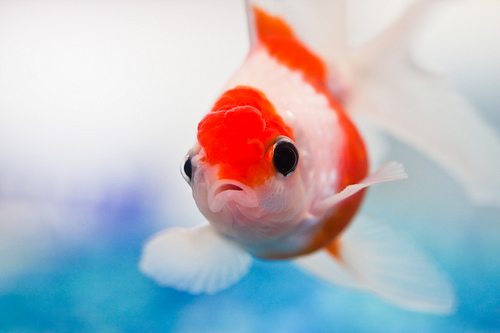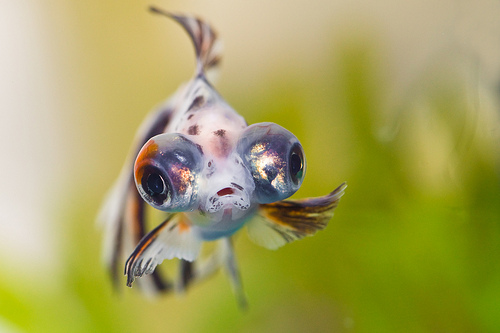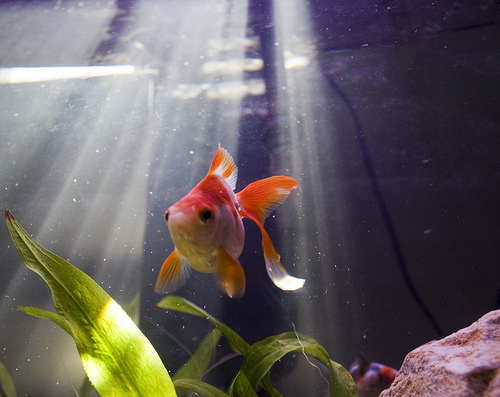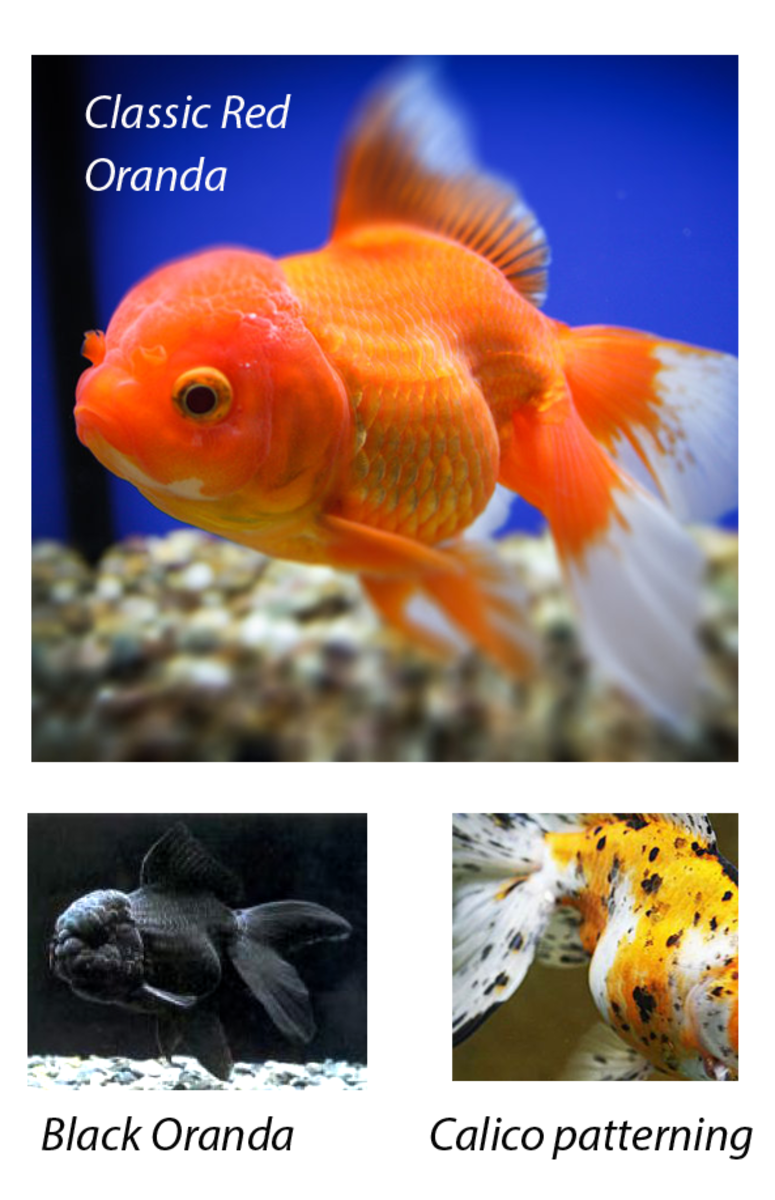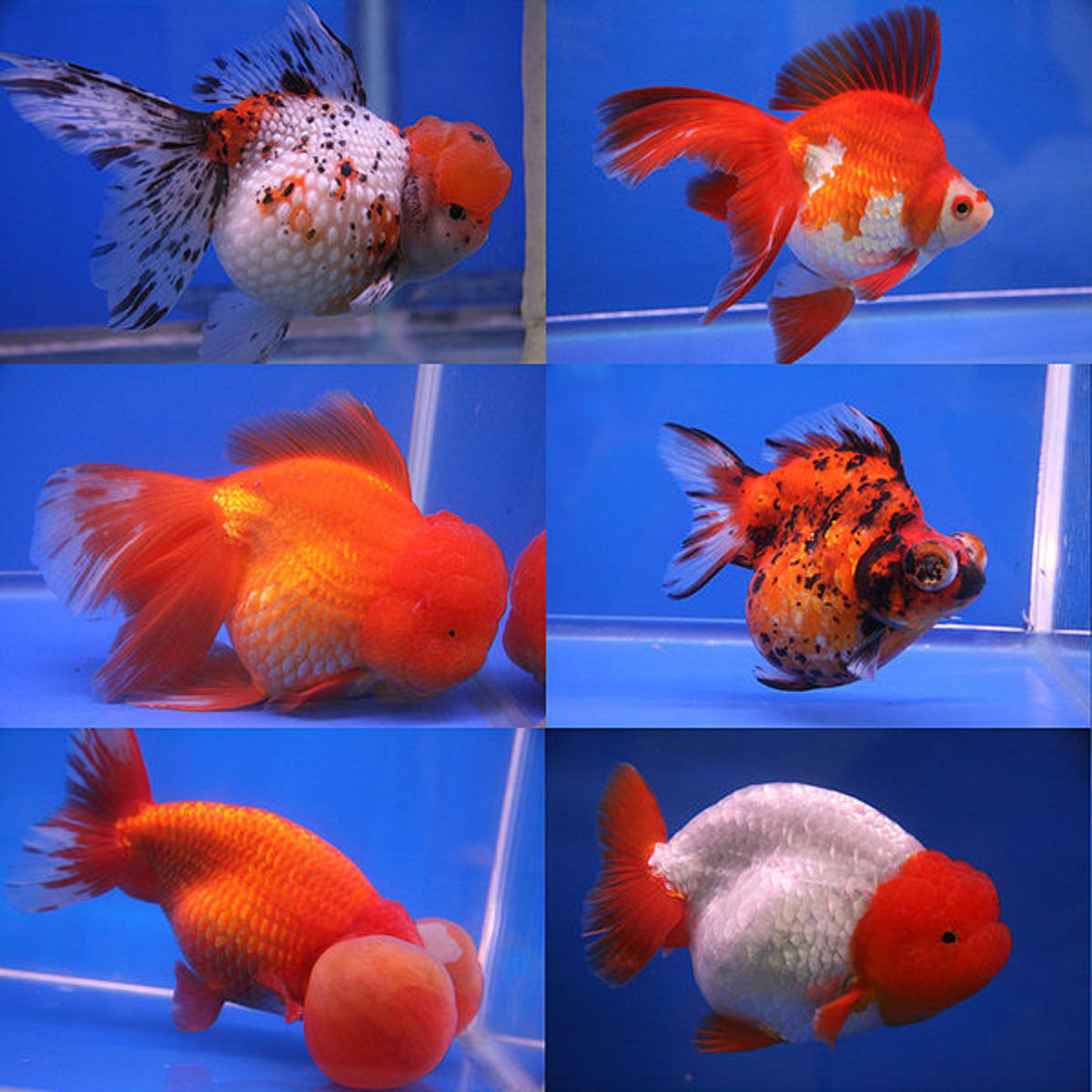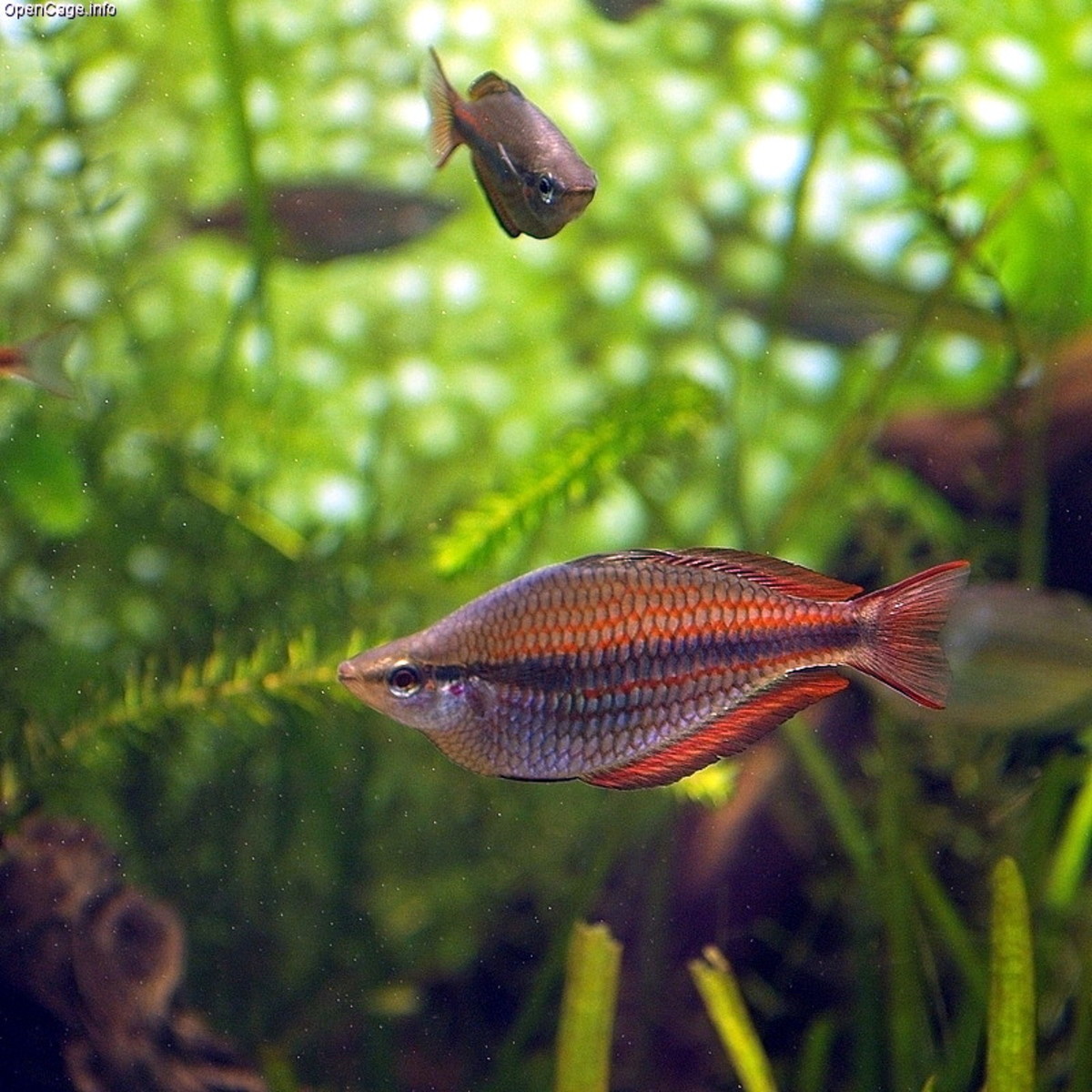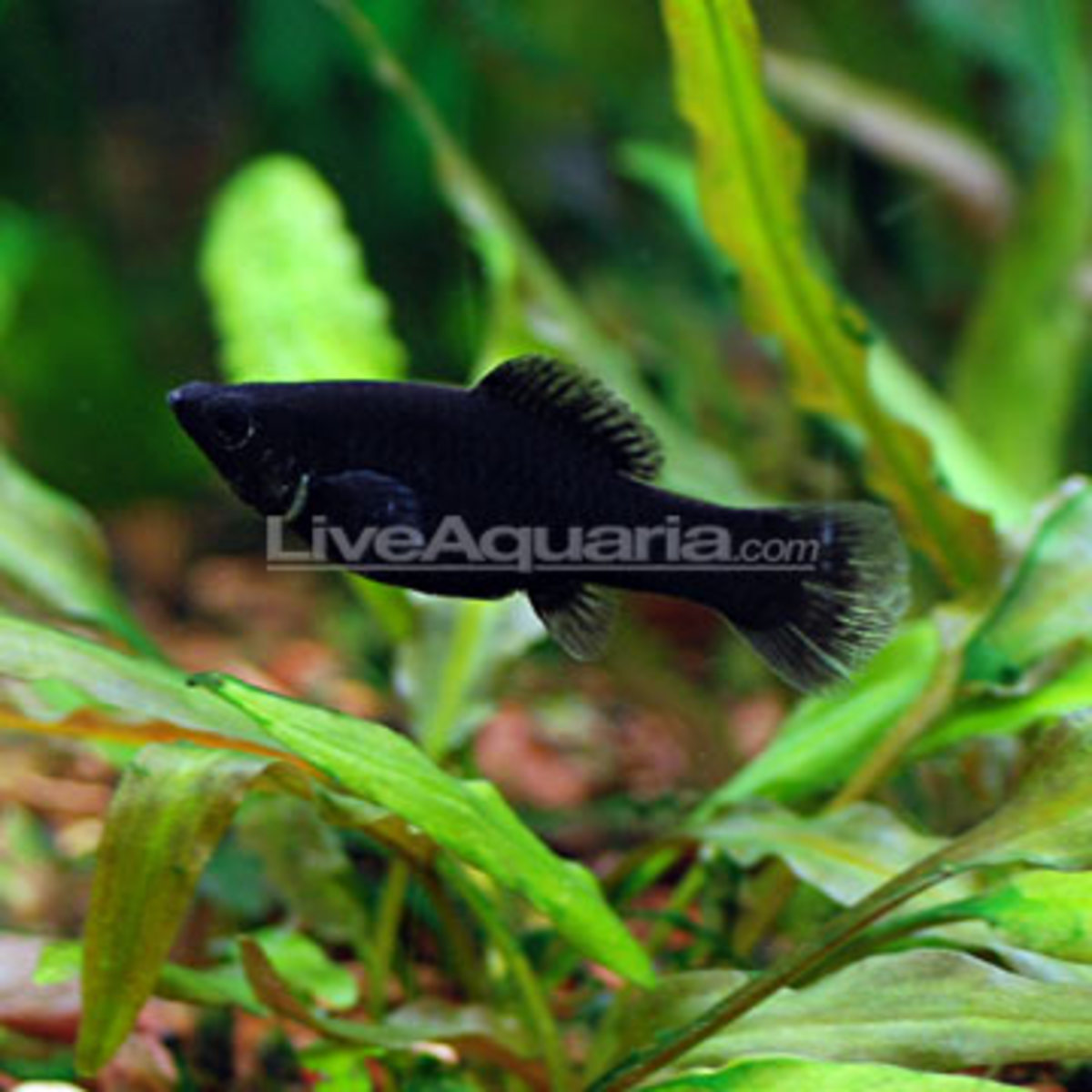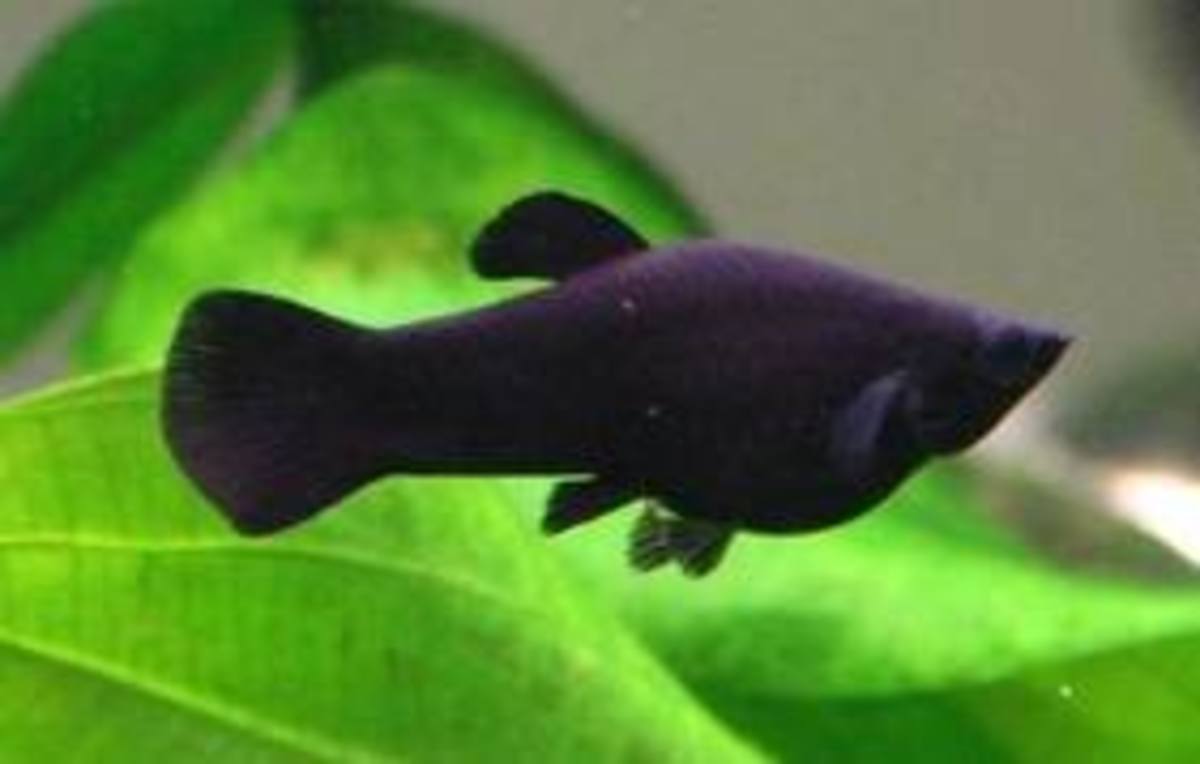- HubPages»
- Pets and Animals»
- Tropical Fish & Aquariums»
- Freshwater Aquarium Animals»
- Cyprinids
Information About Goldfish Breeds
Goldfish History
Goldfish have been bred as early as the year 265, where they were kept in ornamental ponds. Since then, they have evolved from the Crucian carp to the many spectacular, and sometimes strange, breeds of today's goldfish. There are two kinds of goldfish; pond goldfish and fancy goldfish. Pond goldfish are closer relatives of their carp cousin, while fancy goldfish are fish that have been bred into a beautiful array of shapes and colors. Below, you'll find basic descriptions on most breeds of goldfish kept today.
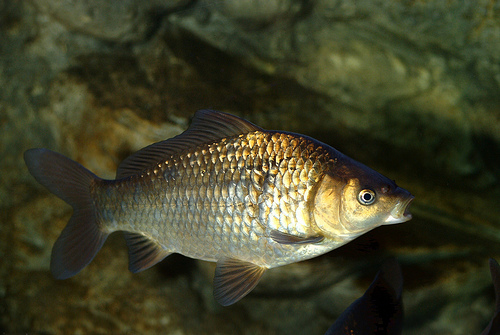


Pond Goldfish
Pond goldfish are similar to their wild ancestors, and as a result, they are generally much hardier, larger, longer-lived, and plainer. They are well suited to pond life, as long as the pond doesn't freeze solid over winter.
Common goldfish- Common goldfish are the closest relatives of the Crucian carp. They are usually bred as feeders for larger fish. They can look rather plain, but are a colorful addition to a pond. They are excellent swimmers and should only be kept with other fast-moving fish, including comet goldfish and koi. Common goldfish can grow to be a foot in length.
Comet goldfish- Probably the most well-known goldfish in the United States, these are the most common feeder goldfish, and often are given away at fairs. They usually an orange or gold color. Comet and common goldfish look almost exactly alike, except comets have longer fins.
Shubunkin goldfish- Shubunkins are lively and active fish. They can swim rapidly with their torpedo-shaped body, and have well-developed fins. As a very colorful breed of fish, Shubunkins come in combinations of black, grey, brown, red, blue, white, and even purple. They are very hardy and are good fish for beginning pond-owners to keep. Like common and comet goldfish, Shubunkins grow up to 12".



Fancy Goldfish
Having been specially bred for hundreds of years, fancy goldfish are generally much showier than pond goldfish. Unfortunately, fancy goldfish were bred for aesthetics rather than hardiness, so they are more delicate and sensitive to water conditions. However, in a well-kept aquarium they can be dazzling and sometimes very odd in appearance. There are some unique body characteristics many breeds possess, including head growths (also known as wens), eye bladders, and humps. It should not be difficult to identify what breed you have, as each is very unique.
Ranchu goldfish- Ranchus are fat, deep-bodied fish that lack a dorsal fin. Because of this, they are slow, clumsy swimmers, and housing them with faster fish is not a good idea, as the latter can steal the food from right under their nose. Ranchus are characterized by a wen that grows on its head about a year after birth. Occasionally, the wen can grow enough to cover its eyes, so the owner must make sure that their goldfish is getting enough food. Their adult size is about 5"-7" long.
Oranda goldfish- These striking fish are, like Ranchus, known for their wen that grows on the upper half of its head and along the sides of its face. They have elaborate finnage similar to the Veil tail's and come in a wide range of colors. Sometimes, the wen can grow so large that the fish's vision is impaired, so extra care should be given to ensure it is eating enough. A popular type of Orange is the red cap, a completely white fish with a red head growth. Orandas can grow up to 10", a large size for fancy goldfish.
Bubble Eye goldfish- These bizarre fish can be identified by the large sacs located under their eyes. These large 'bubbles' are filled with fluid and can give the fish an endearing look that is similar to a naught puppy's. They should not be housed with sharp objects that can damage their eye bladders, since it might cause infection. Lacking a dorsal fin like the Ranchus, Bubble Eye goldfish are also weak swimmers, though they are narrower than the Ranchus. Their eye bladders are sometimes so large it can impair their eyesight, so be sure they are able to find their food every day. These fish are on the small size, with adult being around 5"-6".
Fantail goldfish- Egg-shaped bodies, long finnage, very high dorsal fins and split tails distinguishs fantail goldfish from others. These fish are like Ryukins, with an egg-shaped body only with less developed finnage. Because of their split caudal fin, they are not as fast-moving as common goldfish but are still strong swimmers. Consequently, if they are kept with slower fish, you need to check on all the fish to see if they have eaten enough. Fantails grow to be around 6"-8" and come in a wide variety of colors such as white, red, orange, yellow, combinations, and calico.
Veil Tail goldfish- Like fantails, veil tail goldfish have long, elaborate finnage with a very high caudal fin. They differ from the fantail because their tail lacks any forking in between. The veil tail's body is similar to the Ryukins, only they lack the characteristic hump on their back. They are stunning animals but are not very hardy and are relatively weak swimmers. Veil tail goldfish grow to be 6"-8".
Celestial Eye goldfish- Celestial eye goldfish were given their name since their eyes are angled upwards. Similar to the bubble eye, their bodies are narrow and lack a dorsal fin. They are stronger swimmers than most fancy goldfish, but due to their poor vision, should not be housed with fish like the comet or Shubunkin. Care should be taken to make sure they stay healthy, as their bad eyesight causes them to swim into objects in the aquarium, damaging their slime coat and scales. When full grown, these fish are between 5"-7".
- Planted Tanks- Fake or Live?
There is a lot of debate on whether it's better to use live or fake plants in an aquarium. Discover which is best in an article that weighs the ups and downs of both options. - Why Fish Bowls Are Bad For Your Fish
Fish-keeping has evolved over centuries, from small vases and bowls to the high-tech aquariums of today. Unfortunately, some fish-keepers haven't advanced along too... - How To Set Up A Goldfish Tank
- Goldfish Feeding
- Ranchu Goldfish - Raising the Amazing Fancy Goldfish
Telescope Eye goldfish- Telescope eye goldfish are similar to fantails, but are differentiated by their protruding eyes. These are beautiful fish, sporting long, flowing tails. However, like the celestial eye and bubble eye goldfish, they have bad eyesight and should only be kept with slow-swimming fish. Telescope eyes grow to be 6"-8".
Black Moor goldfish- This breed is very similar to telescope eye goldfish, only their black coloring mark them as a different breed. Black moors can also have an underlying shade of green, maroon, or brown, giving their scales a metallic look. Often, they lose their black coloration over time. Also, the panda moor is the exact same as a black moor, only they have white pigments as well as black. Both breeds' adult size is the same as the common telescope eye's.
Ryukin goldfish- A deep-bodied breed with a large hump on its back, the Ryukin goldfish has long finnage resembling the veil tail's, and is commonly found in combinations of red, white, blue, orange, and brown. They grow to be 7"-9" and compared to many fancy goldfish, Ryukins are strong swimmers.
Pearlscale goldfish- Pearlscales have an appearance similar to fantails, but with a slight variation. They are known for their very large, thick scales, which are translucent and give the Pearlscale its name. They have about the same swimming ability as Ranchus, which is limited. Some Pearlscales have wens and are known as 'crowned Pearlscales.' They are beautiful, but sensitive to water conditions, and thus not the best choice for a beginner aquarist. Pearlscales grow to be around 5"-8" in length.
Pom Pom goldfish- These are easily recognized by outgrowths of flesh on their nostrils. The 'pom poms' are enlarged nasal septum, and come in a variety of colors; black, orange, red, silver, white, or blue, or a combination of several. This breed can have a dorsal fin or not, and at adult size, should be around 6". The ones with dorsal fins are said to look like fantails, while the ones without dorsal fins resemble a Ranchu. Pom poms are slow moving, and should be housed with golfish that have the same trait.




Photos by: Gilles San Martin, Photos by Lina, cbransto, kanonn, bensonkua, goldenfish2010, and katie@!
